Erasers are simple yet essential tools for artists, students, and anyone who makes mistakes! While we often take erasers for granted, there are actually many different types to suit different needs.
In this comprehensive guide, we will explore the most common types of erasers, their key features, and ideal use cases.
Different Types of Erasers

Pencil Erasers
The humble pencil eraser is probably the most widely used type of eraser. Attached to the end of standard pencils, these small, rectangular erasers are handy for quick fixes and erasing small mistakes in pencil.
Key Features:
- Small and portable
- Made of rubber or vinyl
- Designed specifically for graphite pencil marks
- Can become worn down with heavy use
Ideal Uses:
- Erasing minor pencil mistakes and smudges
- Touch ups while drafting and writing
- Cleaning pencil tips
While convenient, pencil erasers are limited in their erasing power. For bigger jobs, a larger eraser is needed.
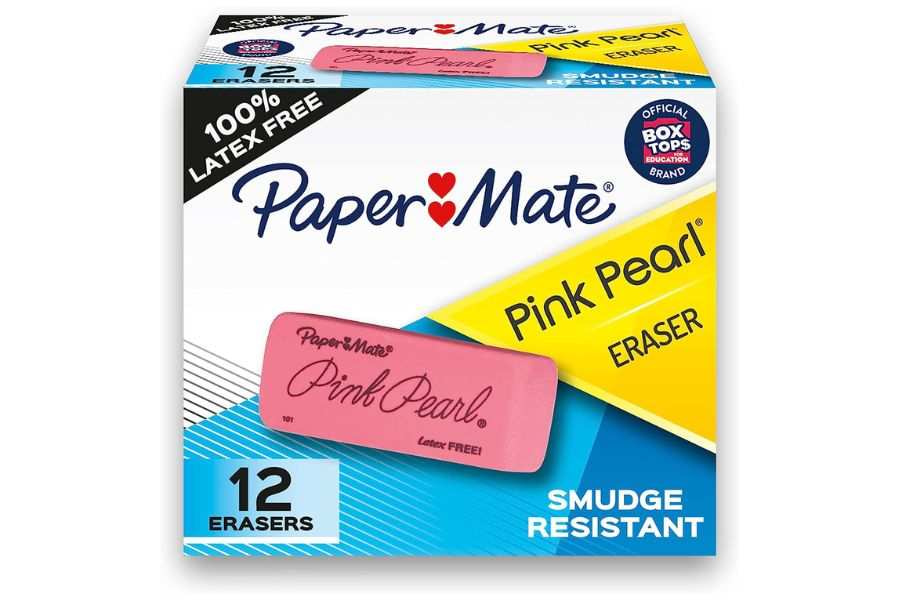
Pink Pearl Erasers
Pink pearl erasers are soft, pliable blocks made of rubber, plastic, or vinyl. They are identifiable by their pale pink color. These general use erasers are a staple for artists, students, office workers, and more.
Key Features:
- Rectangular block shape
- Soft, bendable material
- Erases pencil, pen, marker, and other media
- Leaves less residue than vinyl erasers
Ideal Uses:
- Erasing larger areas and mistakes
- Cleaning sketches and draft work
- General erasing tasks for office work
- Classroom test taking and art projects
Pink pearl erasers provide a balance of erasing power and control. Their smooth edges allow for erasing close to drawing lines without damaging the artwork.
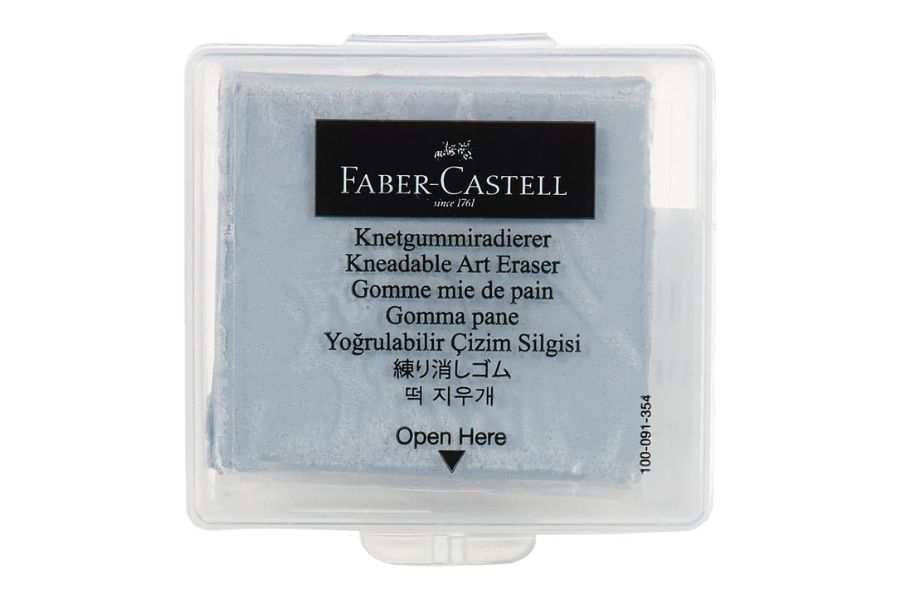
Kneaded Erasers
Kneaded erasers are putty-like erasers that can be molded and shaped. They are made of pliable rubber material. With kneaded erasers, the eraser can be formed into points, edges, wedges and more to tackle detailed erasing jobs.
Key Features:
- Soft, pliable putty-like consistency
- Can be molded, shaped, and reused
- Picks up graphite and charcoal without damaging paper
- Leaves minimal eraser residue
Ideal Uses:
- Precision erasing in drawings and artwork
- Cleaning up fine details in charcoal, graphite, and pastel
- Creating highlights and textures
- Erasing in tight, delicate areas
The moldable quality makes kneaded erasers ideal for artists working with detailed drawings and sketches. The eraser can be shaped to target small areas without affecting surrounding marks.
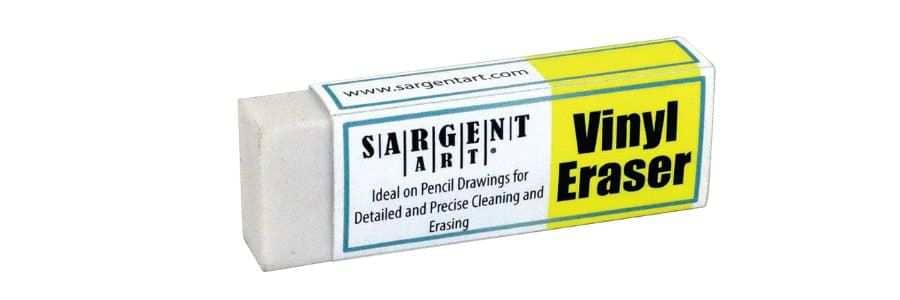
Vinyl Erasers
Vinyl erasers are known for their hard, dense material and superior erasing power. They have a smooth, plastic-like texture and are popular for erasing ink and heavy pencil marks.
Key Features:
- Made of durable vinyl
- Rectangular shape with beveled edge
- Erases pen, marker, crayon, pencil, and more
- Can cause paper abrasion if used aggressively
Ideal Uses:
- Erasing stubborn pencil marks and lines
- Cleaning ink mistakes in pen and marker
- Erasing colored pencil and crayon
- Tackling erasing jobs on rough paper
The dense vinyl material allows vinyl erasers to erase heavy, layered markings that other erasers struggle with. However, they can damage delicate paper if scraped too hard. Gentle, brushing strokes are best for vinyl erasers.
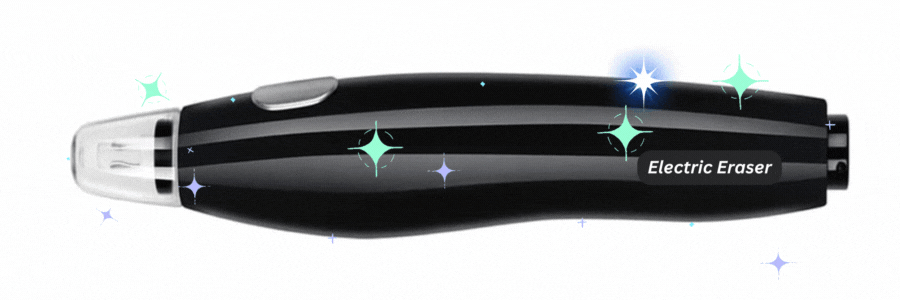
Electric Erasers
Electric erasers take erasing to the next level with motorized rotating heads. They use circular eraser pads that spin rapidly to quickly erase large areas.
Key Features:
- Motorized eraser head
- Uses circular eraser pads
- Ergonomic shape with easy grip
- May be corded or battery powered
- Can contain dust collection system
Ideal Uses:
- Quickly erasing large areas and mistakes
- Removing artwork and drawings from paper
- Cleaning and preparing canvas for painting
- Erasing for long periods without hand fatigue
Electric erasers make swift work of big erasing tasks. Their rotating action also helps lift graphite and pigment from textured surfaces like canvas and thick paper. They excel when hand erasing would be tiring.
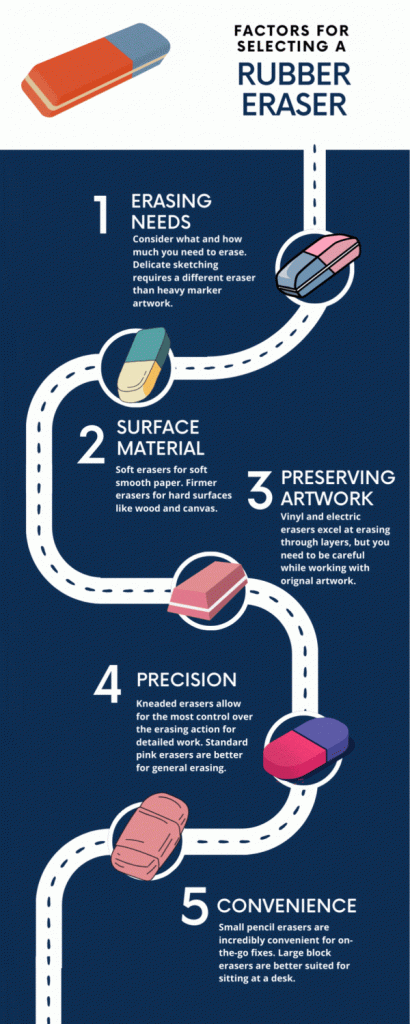
Factors to Consider When Choosing an Eraser
With so many types of erasers available, how do you choose the right one for the task? Here are some key factors to keep in mind:
- Erasing Needs – Consider what and how much you need to erase. Delicate sketching requires a different eraser than heavy marker artwork.
- Surface Material – The texture of the surface you’re erasing also matters. Soft, smooth paper does better with soft erasers. Hard surfaces like wood and canvas can handle the friction of firmer erasers.
- Preserving Artwork – Vinyl and electric erasers excel at erasing through layers, but may damage fragile original artwork underneath if you’re not careful.
- Precision – Kneaded erasers allow for the most control over the erasing action for detailed work. Standard pink erasers are better for general erasing.
- Convenience – Small pencil erasers are incredibly convenient for on-the-go fixes. Large block erasers are better suited for sitting at a desk.
Considering these factors will ensure you choose an eraser well-suited for the materials and needs at hand. Test unfamiliar erasers gently on scrap paper to get a feel for how they perform.

Erasing Technique Matters Too!
No matter how great your eraser, its full erasing potential depends on using proper technique. Here are some tips:
- Erase in a circular motion rather than back-and-forth to avoid abrading the paper.
- Don’t press too hard or you may damage the paper surface underneath.
- Lift the eraser as you erase to carry away particles.
- For pencil marks, erase across the direction of the lines for best results.
- Clean eraser crumbs away frequently for a cleaner erase.
- Shape kneaded erasers into wedges, points and edges to tackle detailed areas.
With some practice, you can learn to erase selectively, leave desirable marks intact, and restore papers and canvases to like-new condition.
Erasing Alternatives
While erasers are incredibly handy for undoing mistakes, they aren’t the only option. Here are some other techniques artists and creators use:
- Paint over errors – With paint, white-out, or new creative markings, you can simply obscure undesired areas.
- Adapt and incorporate – Rather than erasing, find creative ways to work “mistakes” into your overall design.
- Start over – For big errors on nice paper, it may be better to carefully salvage the paper and begin fresh.
- Use scrap paper – Doodle, sketch, and draft on scrap paper first to minimize need for erasing final work.
Knowing when to erase and when to try other methods helps preserve your artwork and sanity!
FAQs
What is the difference between art gum erasers and vinyl erasers?
Art gum erasers are softer and contain no vinyl. They gently lift graphite and charcoal without damaging paper like vinyl erasers can. Vinyl erasers are harder and better for erasing inks, markers and heavy pencil.
Can you use a kneaded eraser on finished artwork?
Yes, kneaded erasers are safe for use on finished artwork. Their soft, pliable rubber material allows you to erase fine details without harming the surrounding artwork. Gently shape and apply it to lift graphite and charcoal precisely.
Is there an eraser that can erase pen and marker ink?
There is no eraser that can fully erase and wipe away pen and marker ink – it will still leave behind a shadow. But vinyl erasers can effectively lighten and reduce ballpoint, rollerball, and permanent marker. Gentle, circular motions work best.
How do you clean eraser residue from a drawing?
Use a clean white vinyl eraser lightly to gently lift leftover crumbs and residue from a drawing surface. Brush away the debris and avoid grinding erasers over the same spot to prevent shine marks. For finished art, use a soft brush or putty rubber to gently clean eraser residue.
Can you erase colored pencil and crayon?
It is possible to erase colored pencil and crayon lightly by rubbing gently with a plastic/vinyl eraser. But heavy, layered marks will still leave behind color shadows. Non-wax crayons containing pigment are easiest to erase. Colored pencils with thicker cores also resist erasing.
Conclusion
From humble pencil cap erasers to advanced electric erasers, there are many options when it comes to choosing an eraser.
Consider the erasing surface, the medium you need to erase, the precision required, and your personal preferences.
Proper eraser selection and erasing technique helps remove mistakes while preserving your artwork and papers.
Experiment with different eraser types and brands to find your favorites. And don’t be afraid to think outside the eraser at times too!
With this comprehensive guide, you should now feel equipped to tackle any erasing need.
You can learn some of the simplest ways to use a rubber eraser on wikihow.com.
What is your favorite eraser? You can leave your comments by visiting our Contact Us page.

Leeisha
Creative Artist
Leeisha is a talented artist with a passion for drawing, coloring, painting, and making paper crafts. Known for her charming and talkative personality, She always finds new and exciting ways to bring her imagination to life. Whether through sketching, coloring, or paper crafting, Leeisha has a gift for turning her ideas into beautiful works of art.






